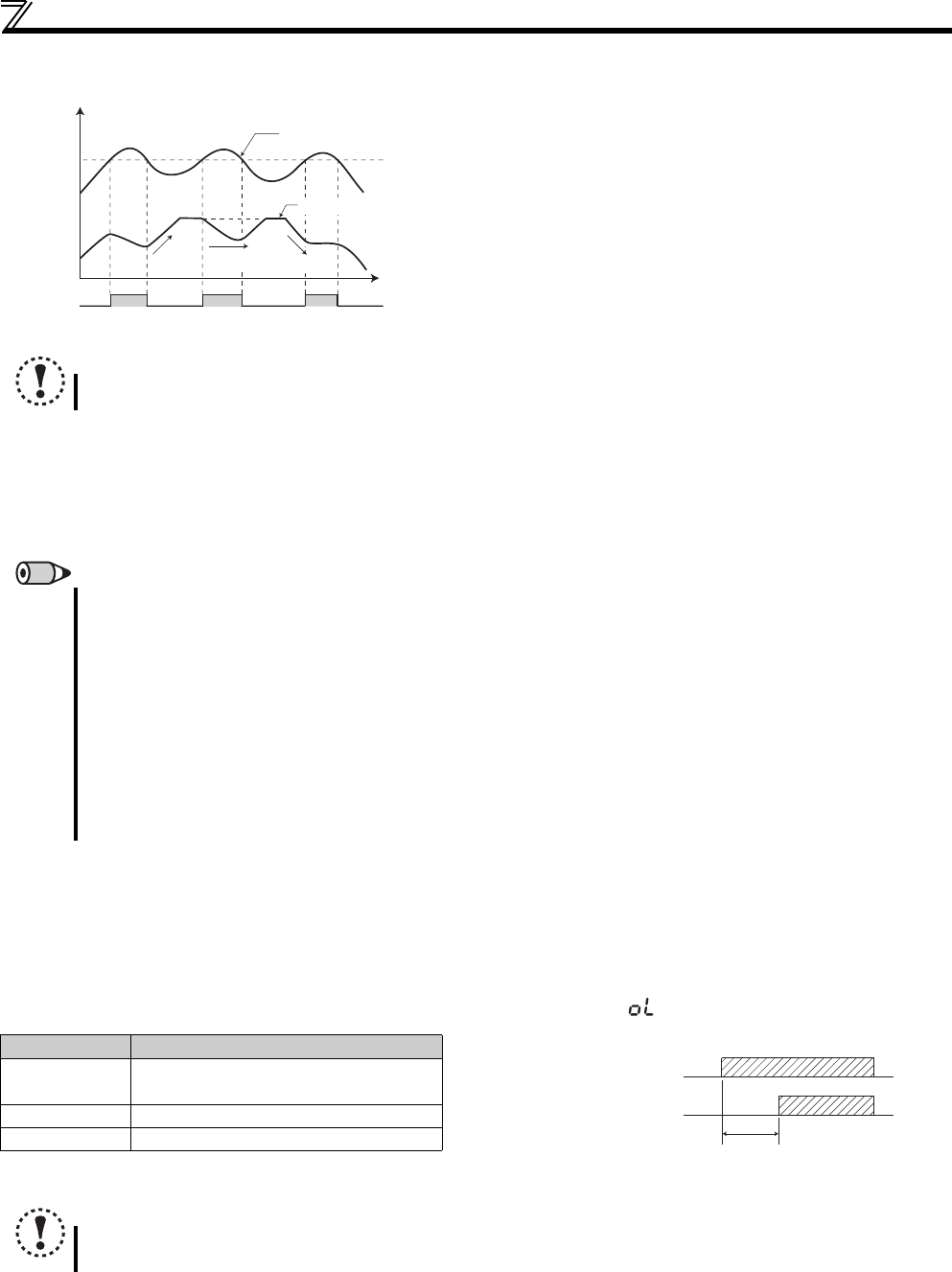
102
Adjustment of the output torque (current) of the motor
(2) Setting of stall prevention operation level (Pr. 22)
(3) A machine protection and load limit by torque limit (Pr. 277)
When Pr. 277 Stall prevention current switchover = "1", torque limit can be set.
When output torque (torque current) exceeds the stall prevention operation level, the output frequency is controlled to limit
the output torque. For the stall prevention operation level at this time, the motor rated torque is defined as reference.
(4) Stall prevention operation signal output and output timing adjustment (OL signal, Pr. 157)
When the output current exceeds the stall prevention operation level and stall prevention is activated, the stall prevention
operation signal (OL signal) turns ON for longer than 100ms. When the output current falls to or below the stall prevention
operation level, the output signal turns OFF.
Use Pr. 157 OL signal output timer to set whether the OL signal is output immediately or after a preset period of time.
This operation is also performed when the regeneration avoidance function or (overvoltage stall) is executed.
Set in
Pr. 22 the percentage of the output current to the rated
inverter current at which stall prevention operation will be
performed. Normally set this parameter to 150% (initial value).
Stall prevention operation stops acceleration (makes
deceleration) during acceleration, makes deceleration during
constant speed, and stops deceleration (makes acceleration)
during deceleration.
When stall prevention operation is performed, the OL signal is
output.
NOTE
If an overload status lasts long, an inverter trip (e.g. electronic thermal O/L relay (E.THM)) may occur.
REMARKS
When driving multiple motors with one inverter, torque limit does not function properly.
Since magnetic flux decreases in the constant output range (Pr. 3 Base frequency or more), the inverter operate with lower torque
than the stall prevention operation level.
When torque limit is activated during regeneration, the output frequency is increased up to the maximum frequency.
Torque limit does not function at 5Hz or less during deceleration.
Note the following when using torque limit under V/F control.
(a) Capacity of the inverter and motor should be the same.
(b) Stall prevention operation level (torque limit level) is the rated torque reference of the motor whose capacity is equivalent to
the inverter.
(c) When Pr. 0 Torque boost setting is large, torque limit is likely to occur in the low speed range.
(d) Use the Advanced magnetic flux vector control when more appropriate torque limit is necessary.
Pr. 157 Setting Description
0
(initial value)
Output immediately.
0.1 to 25 Output after the set time (s) has elapsed.
9999 Not output.
NOTE
If the frequency has fallen to 1Hz by stall prevention operation and remains for 3s, a fault (E.OLT) appears to trip the
inverter output.
Stall prevention operation example
P
r. 22
OL
Output current
Acceleration
Time
Constant
speed
Deceleration
Output frequency
Overload state (OL operation)
OL output signal
Pr. 157 set time(s)


















